- Area: Kampong Thom Province > Santuk District > Kakaoh Commune > Kâkoh Village
- | Type: Ancient Remains & Temples
Buddhist monastery housing ancient remains including inscribed stele (registered under K. 146), sema stone, lintels, and pedestals. The pagoda is quite unusual formed in a cross rising up on a double-tiered platform with its doors boarded shut, hopefully in lieu of restoration works.


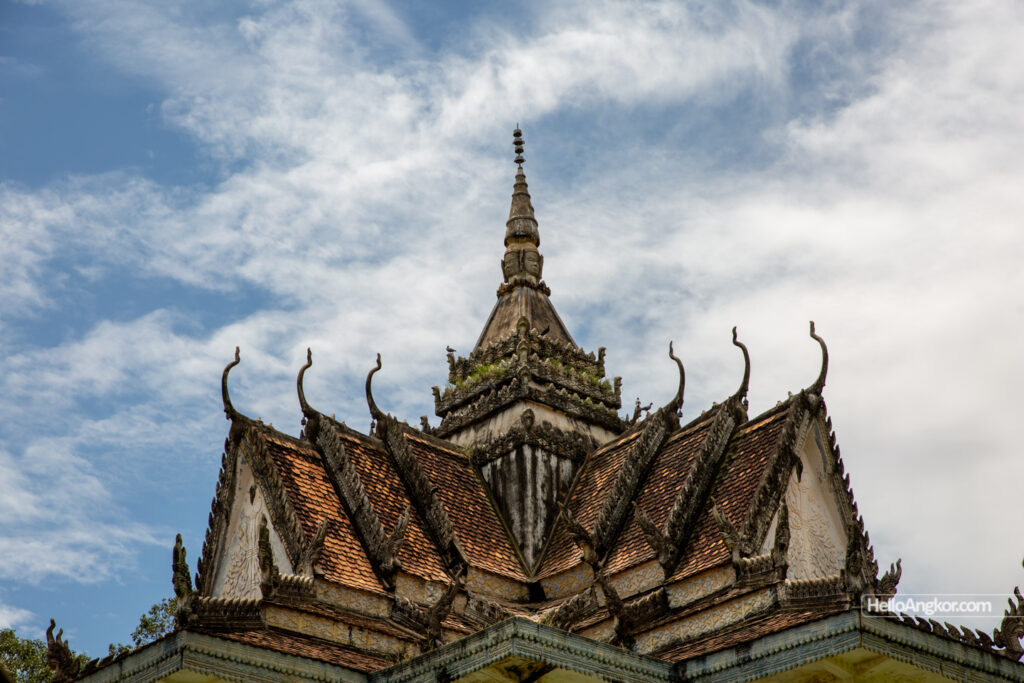
On the east side of the pagoda are two shelters containing relics from multiple eras, the inscribed door jamb carries an inscription noted as being of 8th-century style and a medallion with a figure of Brahma likely from a 7-8th c lintel (not seen on the second visit). The two complete lintels and a colonnette fragment appear to be from around the 10th century with one lintel featuring a narrated frieze of characters including a reclining Vishnu. Also, sema stone and pedestals that likely belong to the Post Angkor period. I can’t speculate on the eras for the small statuary and Buddha on Naga statue, perhaps of recent times. A little further east, there are several oversized sema-shaped slabs of recent times. Where do the remnants come from? I am not sure but it’s worth noting that 1km to the northeast is Phnom Srouch. Update 10/23: according to Henri Parmentiers notes added at the bottom of the page, the remains came from a site that existed 1200m to the west.
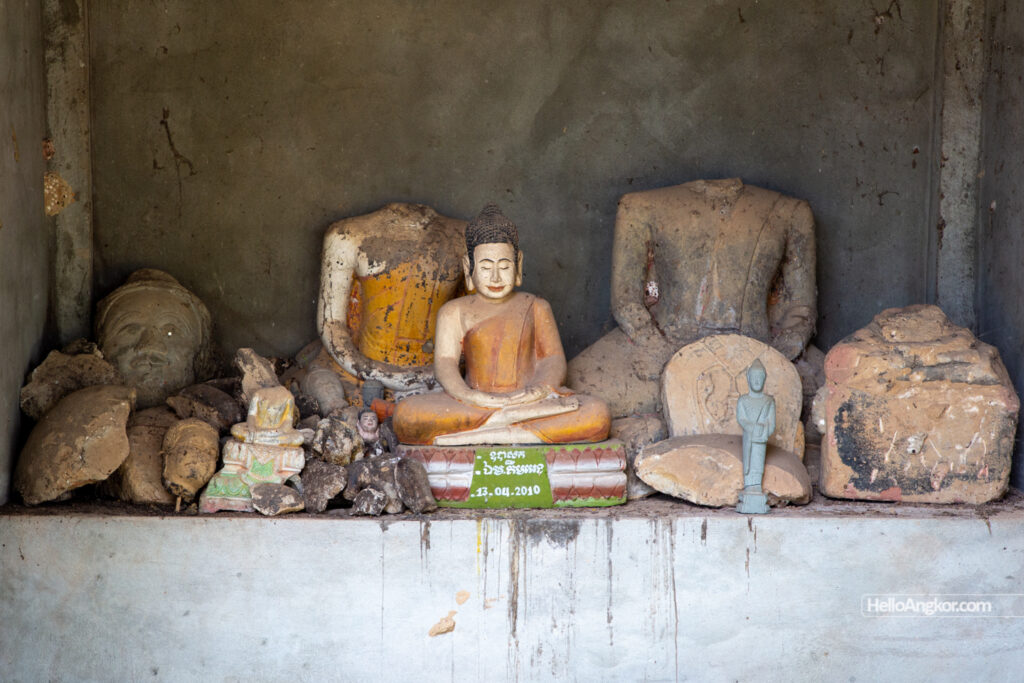

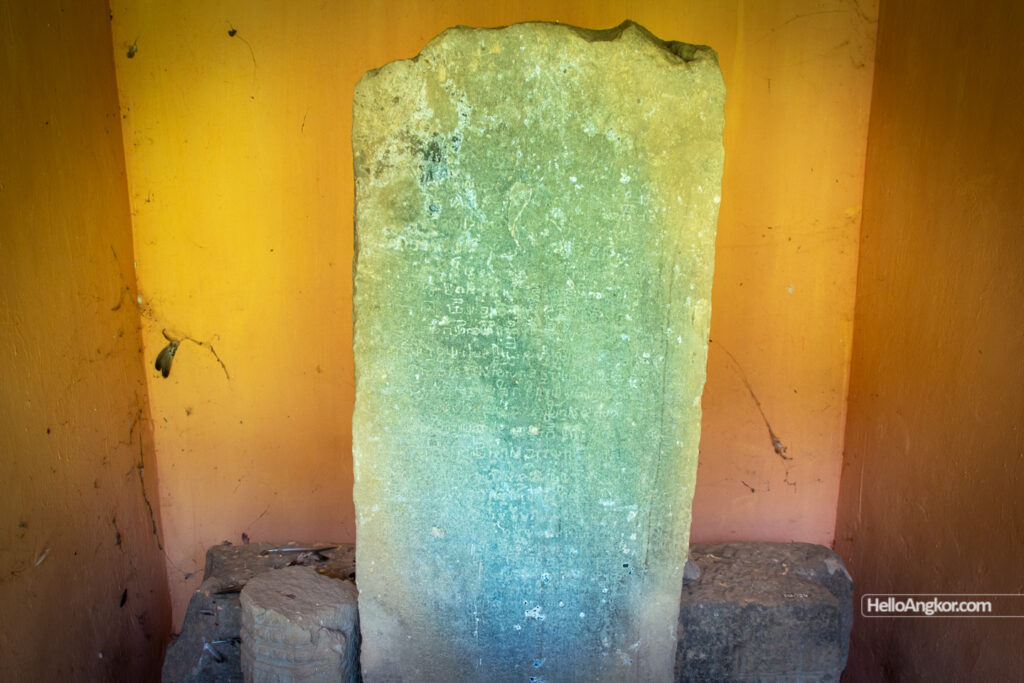
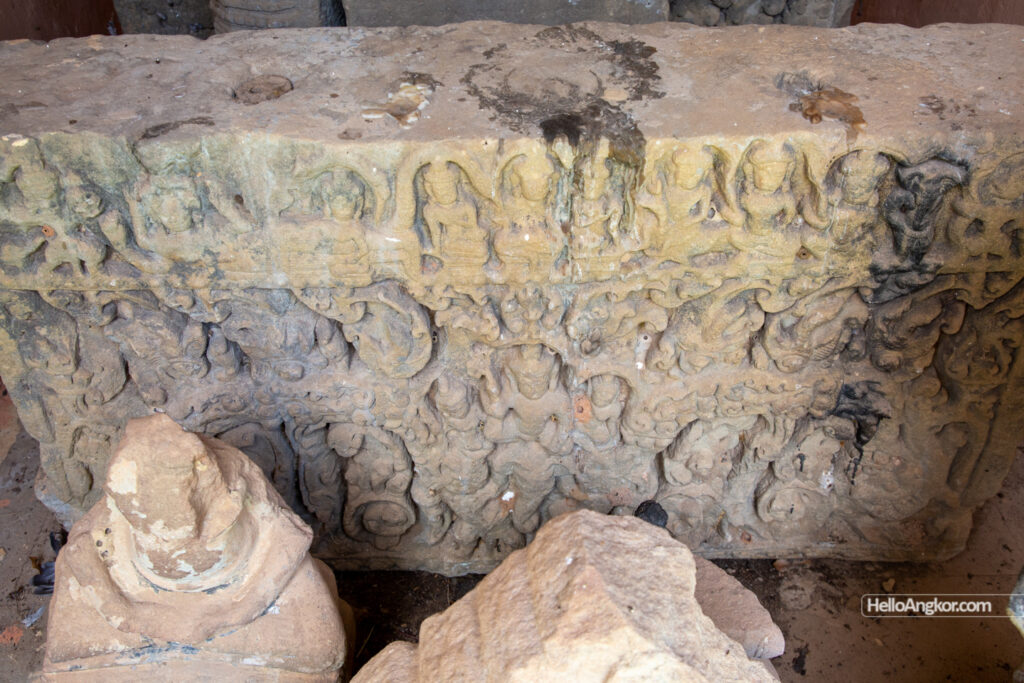
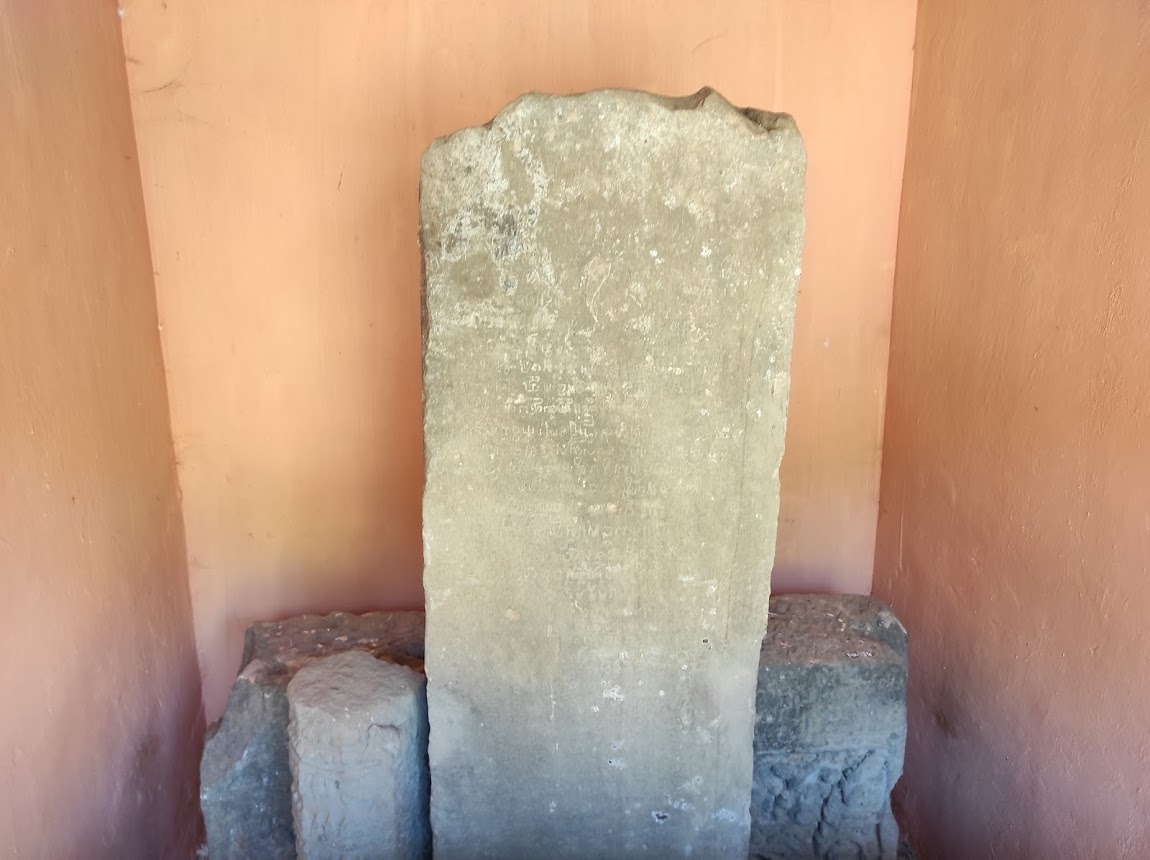

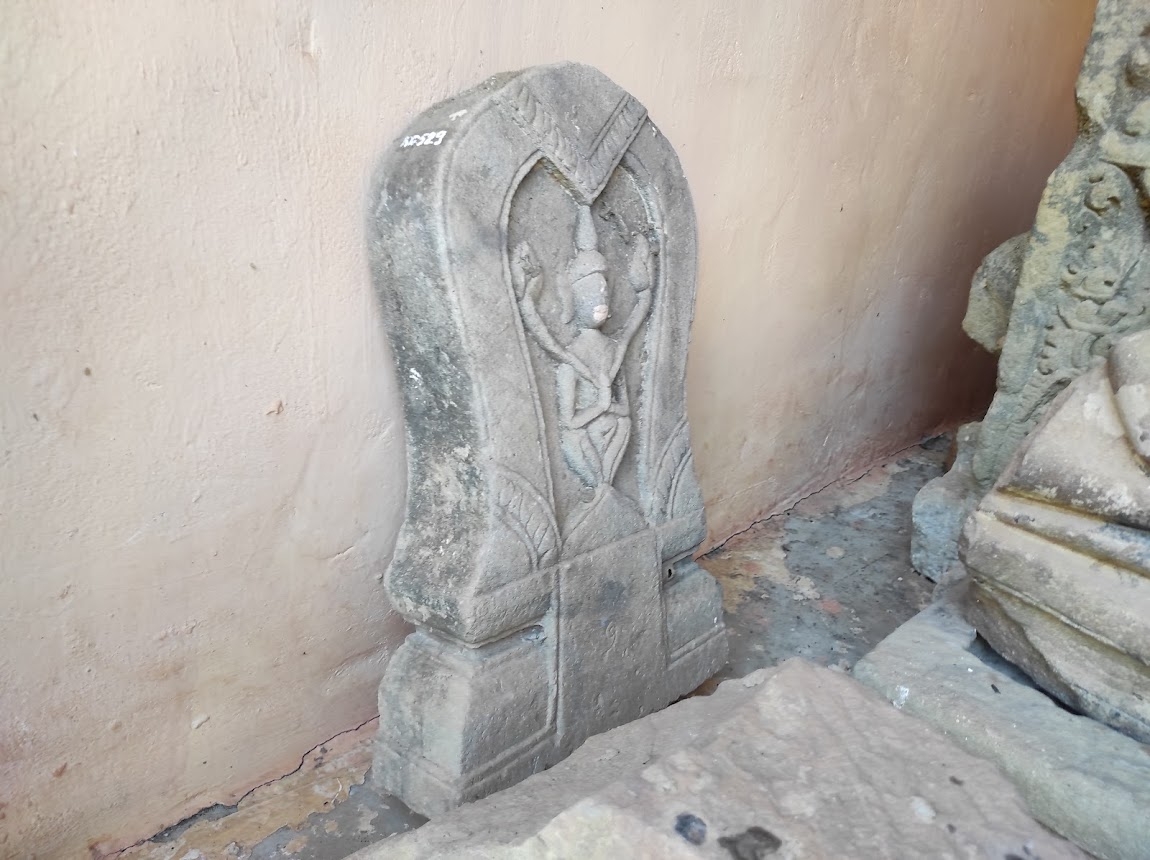


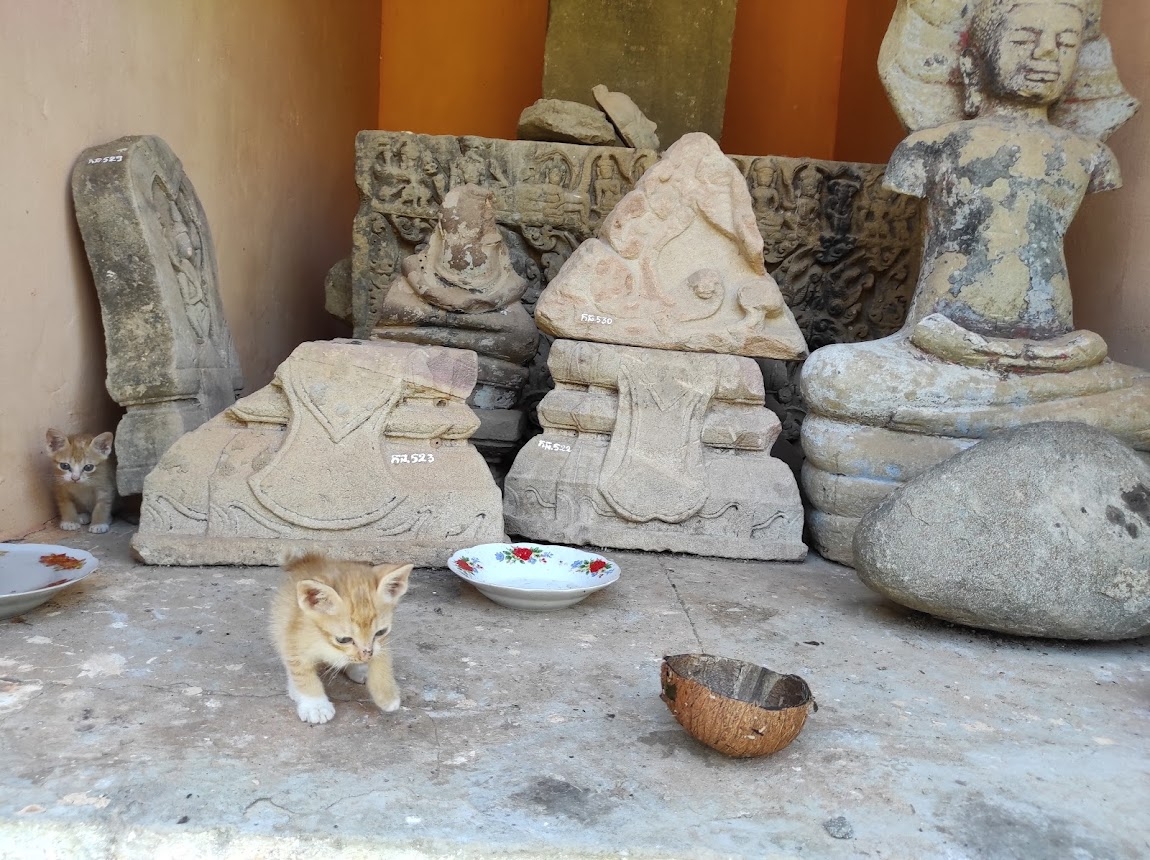

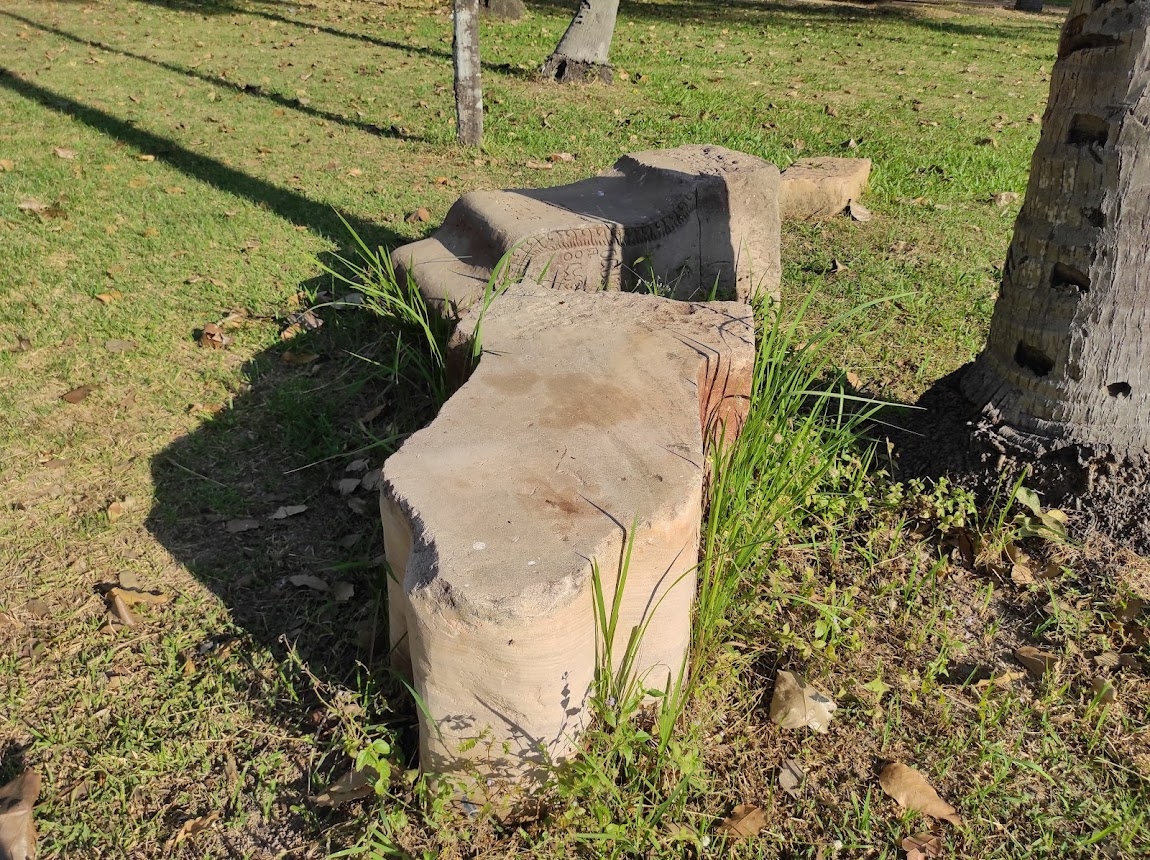



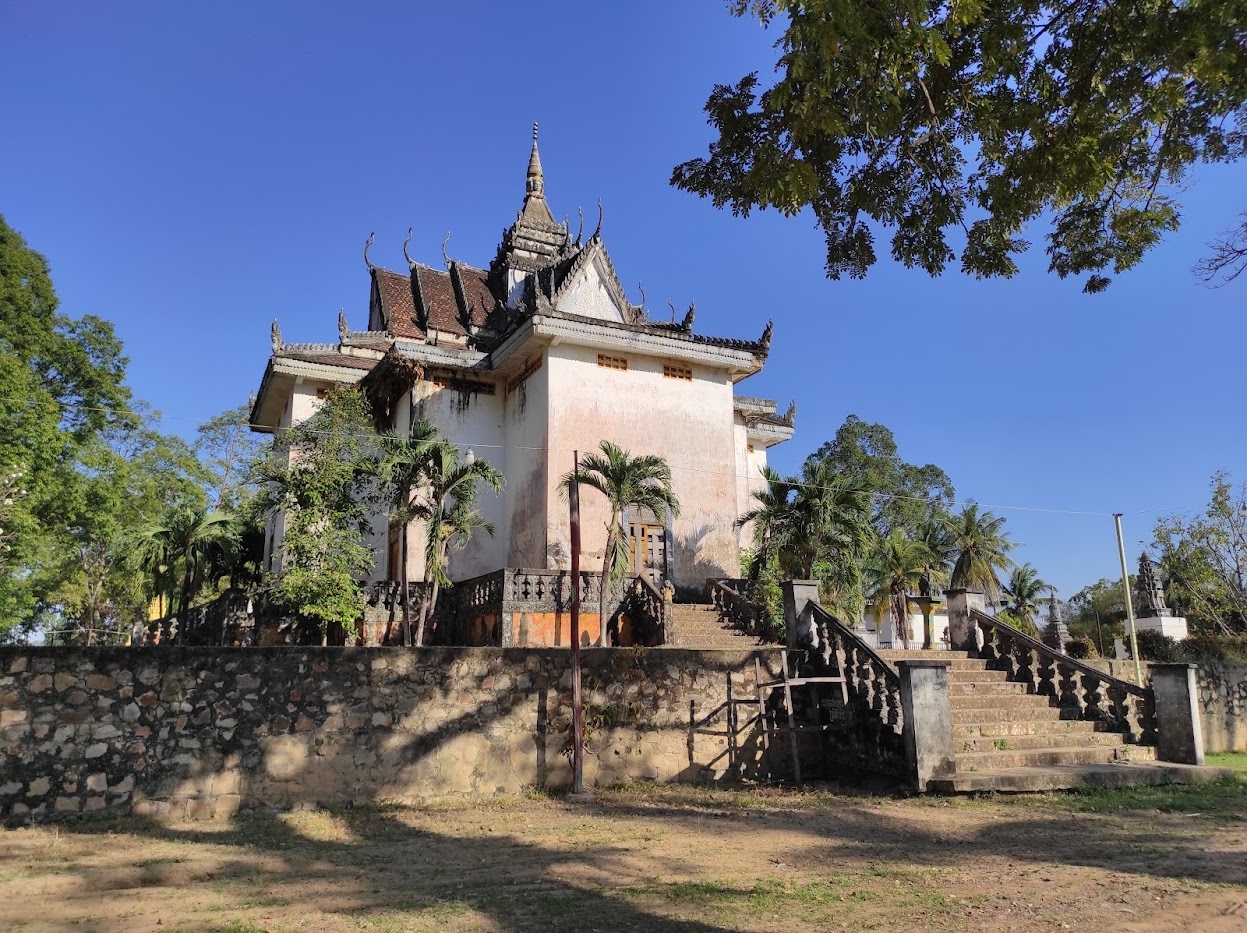
Historical Notes
Kakoh. A flat stele was found in the woods near the village of Kakoh which is at the foot of Phnom Santhuk. This sandstone stone, with its very soft grain, was perhaps extracted from the hill itself.
On one of its faces was engraved an inscription which is currently in such poor condition that we cannot even indicate precisely the number of its lines, approximately forty-three. The writing, prior to the reign of Indra-varman, indicates that this document dates back to the VI or VII centuries saka. The language is sometimes Sanskrit; but more generally of Khmer where it is a question of donations made by a king to Brahmanic deities, in slaves, oxen, buffaloes, gardens and fields.
According to information subsequent to our visit and which deserves to be checked, there are still, not far from Phom Santhuk, in a called Beng Damnak Sbau Ambèng, the remains of a large fortress with ramparts surrounded by ditches full of water.
Le Cambodge, 1901, E. Aymonier
At 1k. from the hamlet of Damnak, Kah-koh, monastery in which is kept a ruined Sanskrit and Khmer stele from the 8th century. Around 1571, a Lao army was defeated in the vicinity. The descendants of a group of these prisoners still occupy a village in the khêt du Barai, located near the Salakhet, buried in a nest of coconut and palm trees. S. of the road, the Kuk-Roka, of Prasat Roka, a ruin where was discovered, in 1914, one of the hospital edicts of the twelfth c.
BEFEO Chronique
Inscription of Vat Kah Koh (Kah Koh, 216) and ruins of Tuol Totin Thnai. The pagoda which contains the reported stele, in reality an old slab jamb, is surrounded by numerous remains of sculptures and construction elements, such as jambs, lintels, etc. As well as the inscription, all these stones come from a ruined monument which seems to have been built, or rebuilt, at a fairly low time. This mound, well recognizable, is approximately 1,200 meters west of the Kaḥ Kòḥ sala; it can be found exactly by following the road which comes from Kompon Thom for 100 meters, and deviating from it towards the East for another hundred meters.
The meaning of the name is, it seems, “mound of the monument opposite the sun”, this would seem to indicate that it stretched from North to South or that it faced West; However, the ruins did not appear to us to indicate a direction other than the usual one, to the East; so the monks left very little there, and, apart from the rather problematic presence of a sraḥ, only a few lintels are worth examining. They show this distinct sign of decadence of being exaggerated in height at the expense of their width. The first is transformed type III; the central motif is classic, but the foliage escaping from it stops on each side halfway in front of a long pendant; this serves as a new axis of symmetry, and a similar scroll occupies the end; the pendant itself comes from a small niche which contains an ascetic. The lintel ends at the top with a significant band; in the center a small divinity with ten arms dances between two kneeling figures; five praying ascetics in niches raise their arms towards her above their heads on each side.
The second lintel has the same arrangement; it is also type III, but the monster is replaced by a three-headed elephant. Under the central head is the head of an ordinary monster; under the lateral heads can be seen erect lions that appear to be biting the trunks. The upper band, less important than in the previous lintel, still shows a series of ascetics in niches.
A third lintel perhaps exists; we couldn’t locate it.
Complément à l’inventaire descriptif des monuments du Cambodge, 1913, Henri Parmentier
Inscription
- K. 146 – 50 lines Khmer – IC VI, p. 80
The jamb preserved in the Vat Cha of the village of Kakoḥ (Santha’k, province of Kompon Thom), bears an inscription in very poor condition which included around fifty lines in Khmer. Of the first 12 lines, nothing is recognizable except the repeated mention of the word çri, preceding, it seems, the names of deities; and in the 12th line the mention of slaves, buffaloes and fields; ampall dasadasigomahiṣakṣetra
The Khmer text then lists the liberalities of the king (gi tel vrah kamratan an prasada) to three divinities, the first of which was called, or had a name ending with *närāyaṇa and the third a name ending by *eçuara, as well as an açrama. On line 15 began a list of slaves (neh gi rohh jmahh kñum) many of whose Sanskrit or Khmer names are still legible, and which offers the particularity of giving these names without preceding them with the common appellatives, vā and ku, si and tai.
This list ends with line 43. Line 44 gives the total number of slaves (pinda kñum nak vrah), a total which is also illegible, and speaks of buffaloes (krapi), oxen (tmur), and plantations ( damrin). The last 5 lines mention coconut trees (ton tem), and rice fields (sre), measured in pada and sare.
The writing is from the 8th century.
Inscriptions du Cambodge VI, 1954, G Coedes
Map
Site Info
- Site Name: Kâkoh (V.) Khmer Name: វត្តកកោះ
- Reference ID: HA12729 | Posted: January 18, 2021 | Last Update: October 11th, 2023
- Tags/Group: Ancient Royal Road, pa, RN6 & Royal Road Angkor-Prasat Andet, sema, T4, Temples, Wat
- Location: Kampong Thom Province > Santuk District > Kakaoh Commune > Kâkoh Village
- MoCFA ID: 1580
- IK Number: 155.02
- Inscription Number/s: K. 146

